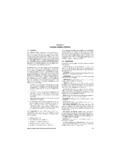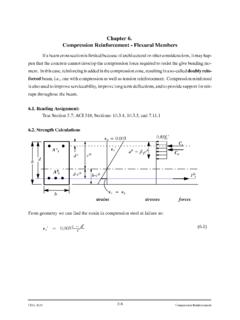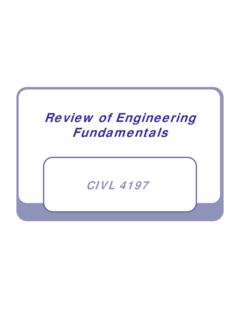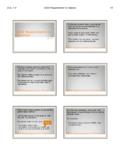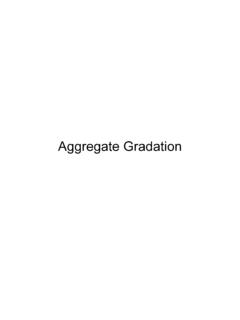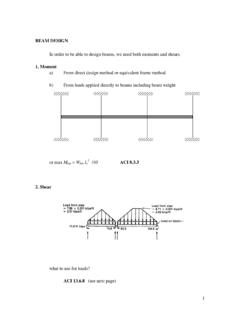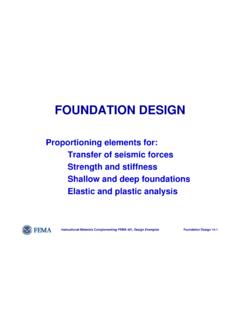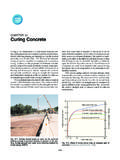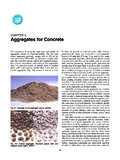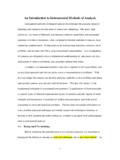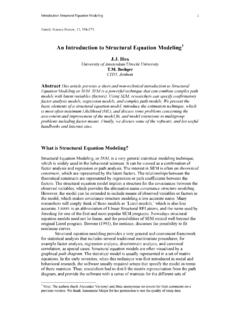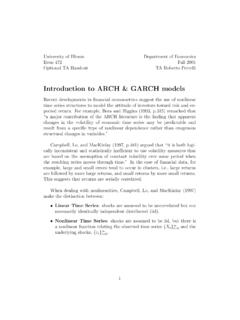Transcription of Chapter 16 – Structural Dynamics - Memphis
1 CIVL 7/8117 Chapter 16 - Structural Dynamics 1/85. Chapter 16 Structural Dynamics Learning Objectives To discuss the Dynamics of a single-degree-of freedom spring-mass system. To derive the finite element equations for the time- dependent stress analysis of the one-dimensional bar, including derivation of the lumped and consistent mass matrices. To introduce procedures for numerical integration in time, including the central difference method, Newmark's method, and Wilson's method. To describe how to determine the natural frequencies of bars by the finite element method. To illustrate the finite element solution of a time- dependent bar problem. Chapter 16 Structural Dynamics Learning Objectives To develop the beam element lumped and consistent mass matrices. To illustrate the determination of natural frequencies for beams by the finite element method.
2 To develop the mass matrices for truss, plane frame, plane stress, plane strain, axisymmetric, and solid elements. To report some results of Structural Dynamics problems solved using a computer program, including a fixed-fixed beam for natural frequencies, a bar, a fixed-fixed beam, a rigid frame, and a gantry crane-all subjected to time-dependent forcing functions. CIVL 7/8117 Chapter 16 - Structural Dynamics 2/85. Structural Dynamics introduction This Chapter provides an elementary introduction to time- dependent problems. We will introduce the basic concepts using the single- degree-of-freedom spring-mass system. We will include discussion of the stress analysis of the one- dimensional bar, beam, truss, and plane frame. Structural Dynamics introduction We will provide the basic equations necessary for Structural dynamic analysis and develop both the lumped- and the consistent-mass matrices involved in the analyses of a bar, beam, truss, and plane frame.
3 We will describe the assembly of the global mass matrix for truss and plane frame analysis and then present numerical integration methods for handling the time derivative. We will provide longhand solutions for the determination of the natural frequencies for bars and beams, and then illustrate the time-step integration process involved with the stress analysis of a bar subjected to a time dependent forcing function. CIVL 7/8117 Chapter 16 - Structural Dynamics 3/85. Structural Dynamics Dynamics of a Spring-Mass System In this section, we will discuss the motion of a single-degree-of- freedom spring-mass system as an introduction to the dynamic behavior of bars, trusses, and frames. Consider the single-degree-of-freedom spring-mass system subjected to a time-dependent force F(t) as shown in the figure below.
4 The term k is the stiffness of the spring and m is the mass of the system. Structural Dynamics Dynamics of a Spring-Mass System The free-body diagram of the mass is shown below. The spring force T = kx and the applied force F(t) act on the mass, and the mass-times-acceleration term is shown separately. Applying Newton's second law of motion, f = ma, to the mass, we obtain the equation of motion in the x direction: F (t ) kx mx . where a dot ( ) over a variable indicates differentiation with respect to time. CIVL 7/8117 Chapter 16 - Structural Dynamics 4/85. Structural Dynamics Dynamics of a Spring-Mass System The standard form of the equation is: mx kx F (t ). The above equation is a second-order linear differential equation whose solution for the displacement consists of a homogeneous solution and a particular solution.
5 The homogeneous solution is the solution obtained when the right-hand-side is set equal to zero. A number of useful concepts regarding vibrations are available when considering the free vibration of a mass; that is when F(t) = 0. Structural Dynamics Dynamics of a Spring-Mass System k Let's define the following term: 2 . m The equation of motion becomes: x 2 x 0. where is called the natural circular frequency of the free vibration of the mass (radians per second). Note that the natural frequency depends on the spring stiffness k and the mass m of the body. CIVL 7/8117 Chapter 16 - Structural Dynamics 5/85. Structural Dynamics Dynamics of a Spring-Mass System The motion described by the homogeneous equation of motion is called simple harmonic motion. A typical displacement - time curve is shown below.
6 Where xm denotes the maximum displacement (or amplitude of the vibration). Structural Dynamics Dynamics of a Spring-Mass System The time interval required for the mass to complete one full cycle of motion is called the period of the vibration (in seconds) and is defined as: 2 .. The frequency in hertz (Hz = 1/s) is f = 1/ = /(2 ). CIVL 7/8117 Chapter 16 - Structural Dynamics 6/85. Structural Dynamics Dynamics of a Spring-Mass System Structural Dynamics Dynamics of a Spring-Mass System CIVL 7/8117 Chapter 16 - Structural Dynamics 7/85. Structural Dynamics Dynamics of a Spring-Mass System Structural Dynamics Dynamics of a Spring-Mass System CIVL 7/8117 Chapter 16 - Structural Dynamics 8/85. Structural Dynamics Dynamics of a Spring-Mass System Structural Dynamics Dynamics of a Spring-Mass System CIVL 7/8117 Chapter 16 - Structural Dynamics 9/85.
7 Structural Dynamics Direct Derivation of the Bar Element Let's derive the finite element equations for a time-dependent (dynamic) stress analysis of a one-dimensional bar. Step 1 - Select Element Type We will consider the linear bar element shown below. where the bar is of length L, cross-sectional area A, and mass density (with typical units of lb-s2/in4), with nodes 1 and 2. subjected to external time-dependent loads: fx e (t ). Structural Dynamics Direct Derivation of the Bar Element Step 2 - Select a Displacement Function A linear displacement function is assumed in the x direction. u a1 a2 x The number of coefficients in the displacement function, ai, is equal to the total number of degrees of freedom associated with the element. We can express the displacement function in terms of the shape functions: u x x u N1 N2 1 N1 1 N2.
8 U2 L L. CIVL 7/8117 Chapter 16 - Structural Dynamics 10/85. Structural Dynamics Direct Derivation of the Bar Element Step 3 - Define the Strain/Displacement and Stress/Strain Relationships The stress-displacement relationship is: du x [B ] d . dx 1 1 u1 . where: [B ] d . L L u2 . The stress-strain relationship is given as: x [D] x [D][B ] d . Structural Dynamics Direct Derivation of the Bar Element Step 4 - Derive the Element Stiffness Matrix and Equations The bar element is typically not in equilibrium under a time- dependent force; hence, f1x f2x. We must apply Newton's second law of motion, f = ma, to each node. Write the law of motion as the external force fxe minus the internal force equal to the nodal mass times acceleration. CIVL 7/8117 Chapter 16 - Structural Dynamics 11/85.
9 Structural Dynamics Direct Derivation of the Bar Element Step 4 - Derive the Element Stiffness Matrix and Equations Therefore: 2u1 2u2. f1x e f1x m1 f2 x e f2 x m2. t 2 t 2. where: AL AL. m1 m2 . 2 2. Mass lumped to the nodes 2u1 . f1x e f1x m1 0 t 2 . e . f2 x f2 x 0 m2 2u2 . t 2 . Structural Dynamics Direct Derivation of the Bar Element Step 4 - Derive the Element Stiffness Matrix and Equations If we replace {f} with [k]{d} we get: f (t ) k d m d . e Where the elemental stiffness matrix is: 1 1 2 d . AE. k L 1 1 .. d . t 2. and the lumped-mass matrix is: AL 1 0 . m 2 0 1 . CIVL 7/8117 Chapter 16 - Structural Dynamics 12/85. Structural Dynamics Direct Derivation of the Bar Element Step 4 - Derive the Element Stiffness Matrix and Equations Let's derive the consistent-mass matrix for a bar element.
10 The typical method for deriving the consistent-mass matrix is the principle of virtual work; however, an even simpler approach is to use D'Alembert's principle. The effective body force is: X u . e The nodal forces associated with {Xe} are found by using the following: fb [N ]T { X } dV. V. Structural Dynamics Direct Derivation of the Bar Element Step 4 - Derive the Element Stiffness Matrix and Equations Substituting {Xe} for {X} gives: fb [N ]T u dV. V. The second derivative of the u with respect to time is: u [N ] d u [N ] d . where u and u are the nodal velocities and accelerations, respectively. CIVL 7/8117 Chapter 16 - Structural Dynamics 13/85. Structural Dynamics Direct Derivation of the Bar Element Step 4 - Derive the Element Stiffness Matrix and Equations fb N N d dV m d.

